“Literal Terrorism” and “Wotan Youth”. How the Ultra-Right in Ukraine Use Telegram to Promote Their Ideas
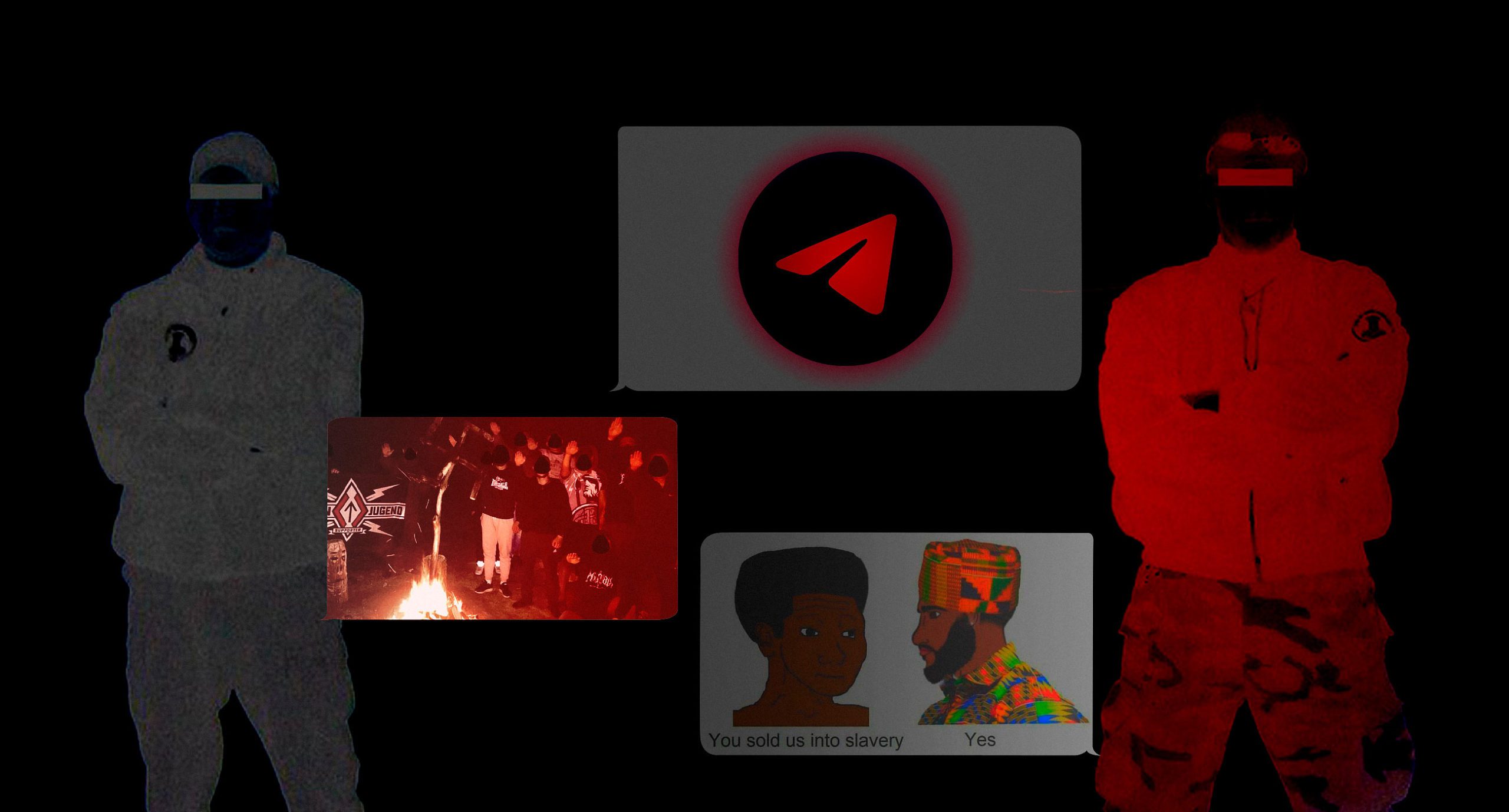
In June 2020, the Security Service of Ukraine detained a participant in the war in Donbass, Russian citizen Alexander Skachkov, who has been living in Ukraine for the past few years. He and several other volunteers were accused of selling the manifesto of Brenton Tarrant, an Australian terrorist who killed 51 people in mosques in 2019. According to intelligence agencies, the document was disseminated via telegram channels. A month later Skachkov was released from jail under house arrest. The channel, with which Skachkov is connected, is successfully functioning even now.
Telegram was created to help pro-democracy activists, but lax content rules have made it a popular platform for extremists. Zaborona’s deputy editor-in-chief Yuliana Skibitskaya and freelance journalist Leonid Ragozin studied how far-right and neo-Nazis use Telegram to promote their ideas.
This material was created in conjunction with the American edition of Rest of World, which focuses on how technology outside the Western world is driving global change. Zaborona publishes it with changes and additions important for the audience of Eastern Europe.
On March 15, 2019, Australian Brenton Tarrant, came to one of the Christchurch mosques in New Zealand. For about six minutes Tarrant shot everyone who was inside, and then drove to an Islamic center nearby, where he also shot the parishioners. A total of 51 people died, another 40 were injured.
Before the attack, Tarrant tweeted his manifesto, where he talked about the superiority of the white race and future “replacement”, which meant that white people would gradually be assimilated by the non-whites. A few days after the terrorist attack, this 87-page document, translated into Russian, reached a wide audience of far-right supporters of such ideas in Eastern Europe. It was distributed primarily through Telegram.
Who exactly translated the manifesto is unknown, but one of the first publications appeared five days after the shooting on the website of the Russian-language neo-Nazi platform WotanJugend, and later on its Telegram channel. The name translates as “Youth of Wotan” (Wotan, aka Odin – is the main god of Germanic and Scandinavian mythology, Jugend refers to the Hitlerjugend).
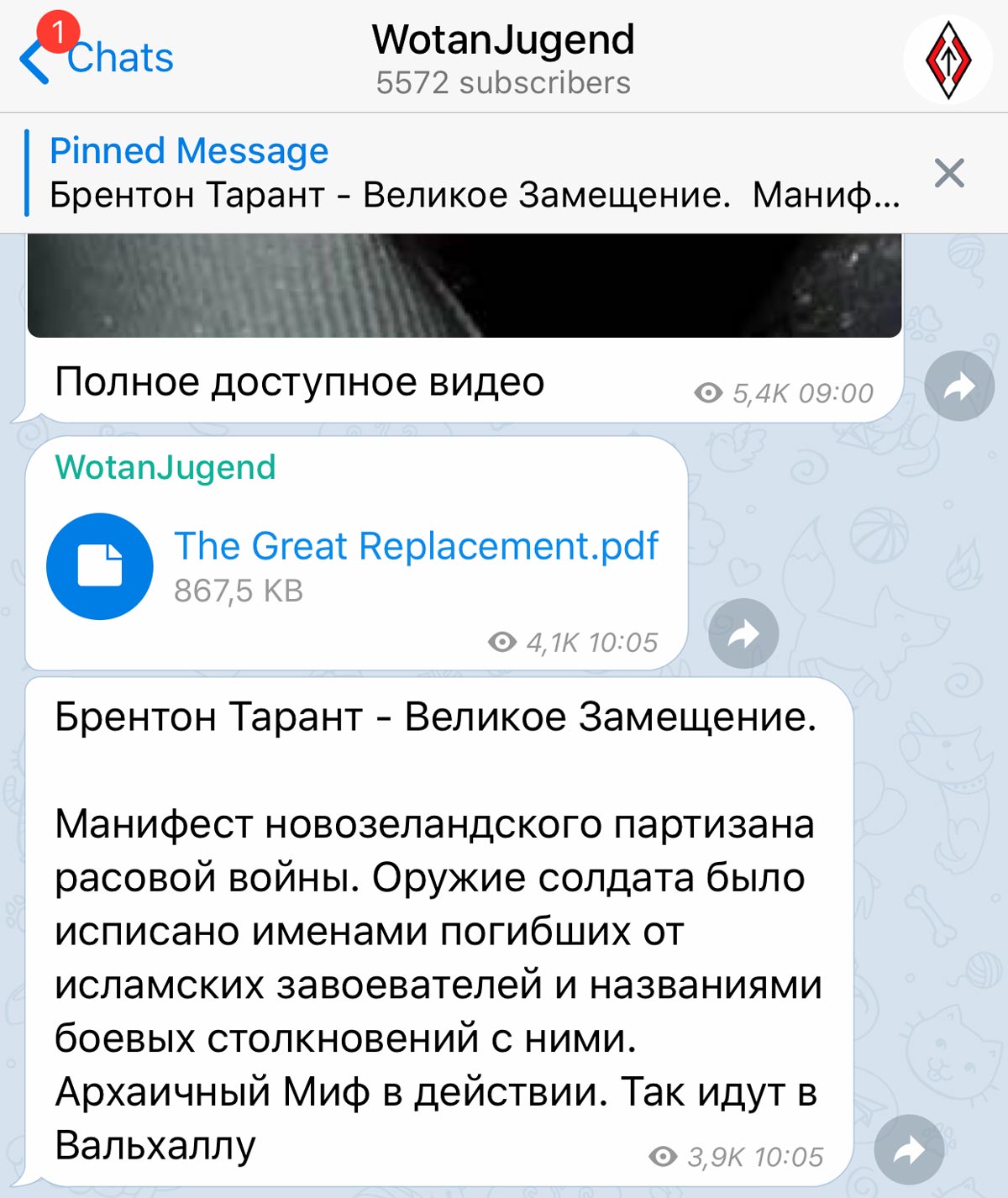
The post was deleted after a few months, but saved copies of the page can still be found through the Wayback Machine. The original post on the WotanJugend telegram channel was also deleted, but the reposts were preserved on other channels. A graffiti photo of a Christchurch shooter in full combat gear with a manifesto in his hands, however, was still available on WotanJugend at the time of writing this article. The photo is signed like this: “Hallowed be thy Name” (the author’s spelling is preserved).
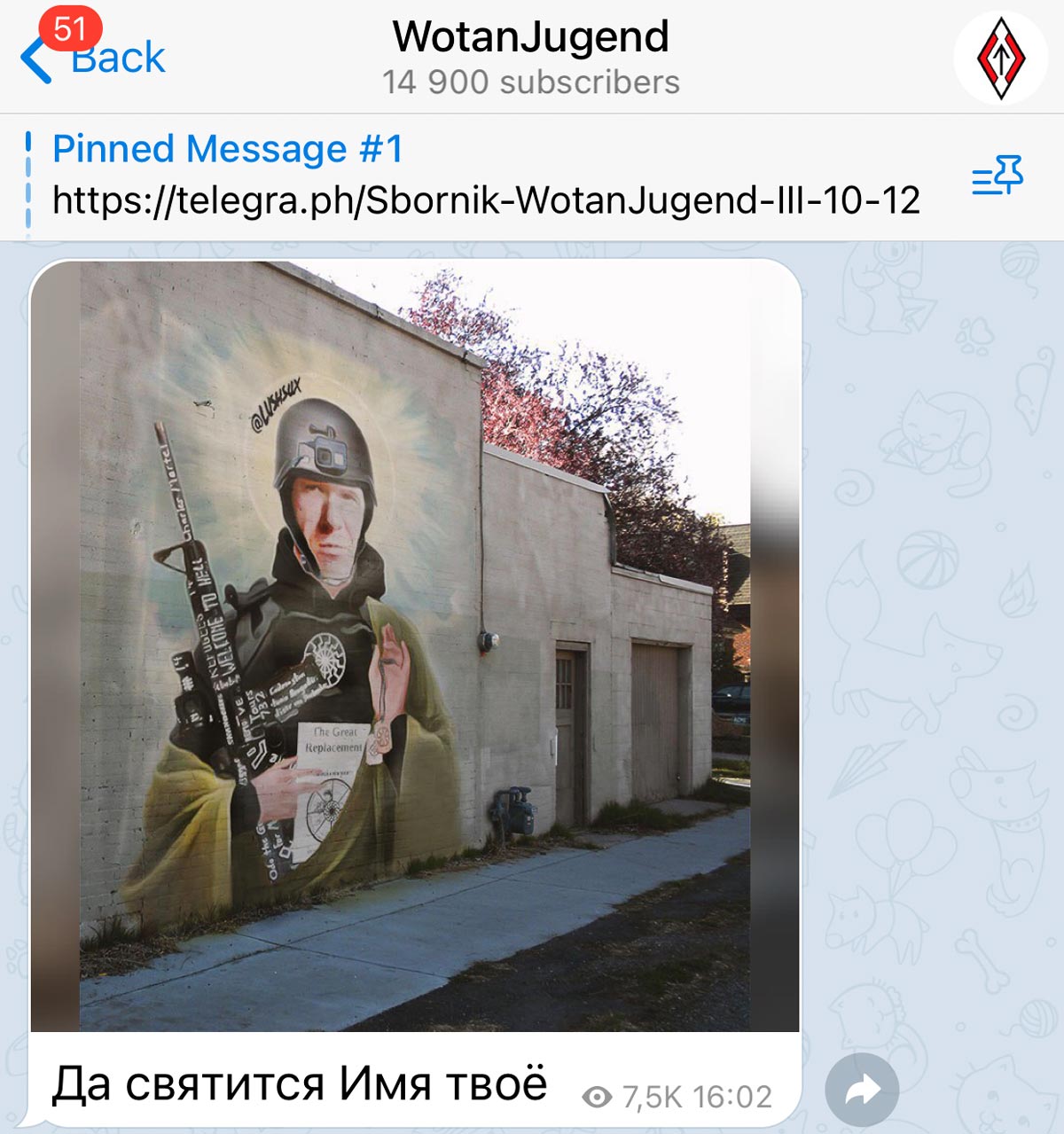
Ideological inspirer
Behind the creation of the WotanJugend channel is the Russian Aleksey Levkin, who calls himself its “ideological inspirer” and “author”. In 2014, Levkin moved from Russia to Ukraine. Zaborona already wrote that many Russians of radical right and neo-Nazi views did this. Some enrolled in the Azov battalion, known for its loyal attitude towards the ultra-right. Levkin also fought with Azov. Moreover, in an interview with one of the Greek publications, according to Bellingcat, Levkin called himself the “ideological inspirer” of the National Militia. This paramilitary entity emerged on the basis of Azov and the National Corps party. In one of her posts, Elena Semenyaka, coordinator of international relations of the National Corps, also named Levkin as the ideologist of the Azov Movement.
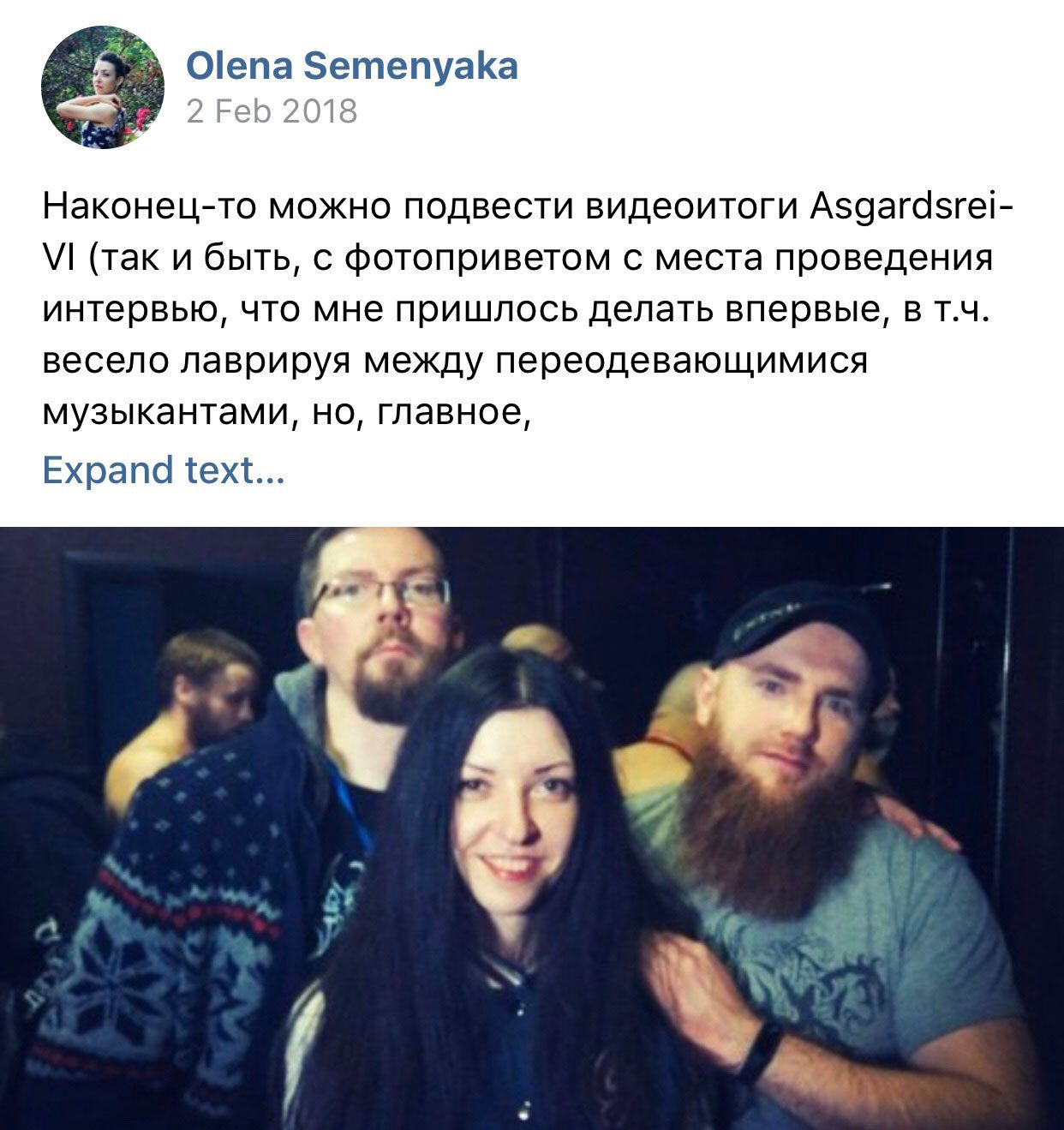
We are meeting with Levkin in a coffee shop on Maidan Independence Square. Around the corner is his peculiar residence, Militant Zone, where you can buy clothes with ultra-right symbols and meet like-minded people. Levkin himself is short, but broad-shouldered, shaved bald, with a thick red beard and blue eyes. The resemblance to the Scandinavian Vikings is one hundred percent and, obviously, not accidental: like many ultra-rightists, Levkin admires them. He places an order at the counter and, paying, jokes: “The account went to 88 hryvnia [the number 1488 refers to Adolf Hitler].”
Levkin became famous, among other things, thanks to his group “M8L8TH”, which he founded in 2002. The two eights again refer to Hitler, although, as Levkin said to Zaborona, initially the name of the group was conceived as “the molokh of war, which grinds the fates of people, and later we came up with Hitler.” A photo of a banner with the old logo of early 2000s group published by WotanJugend had a swastika instead of an X.
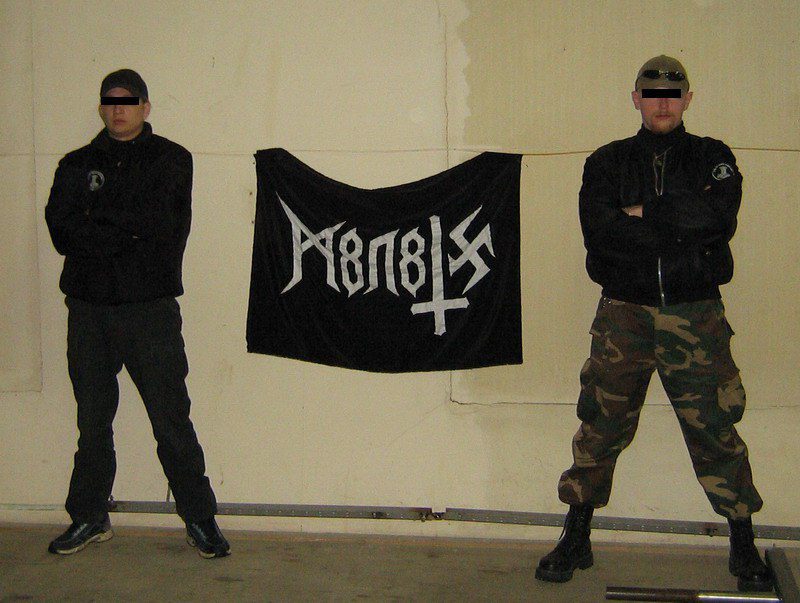
Levkin’s group still exists: on December 13, the group performed at the HERETIC FEST – the festival organized by him. At the concert the audience zigzagged and shouted “Heil Hitler”, some came with the flags of the Third Reich.
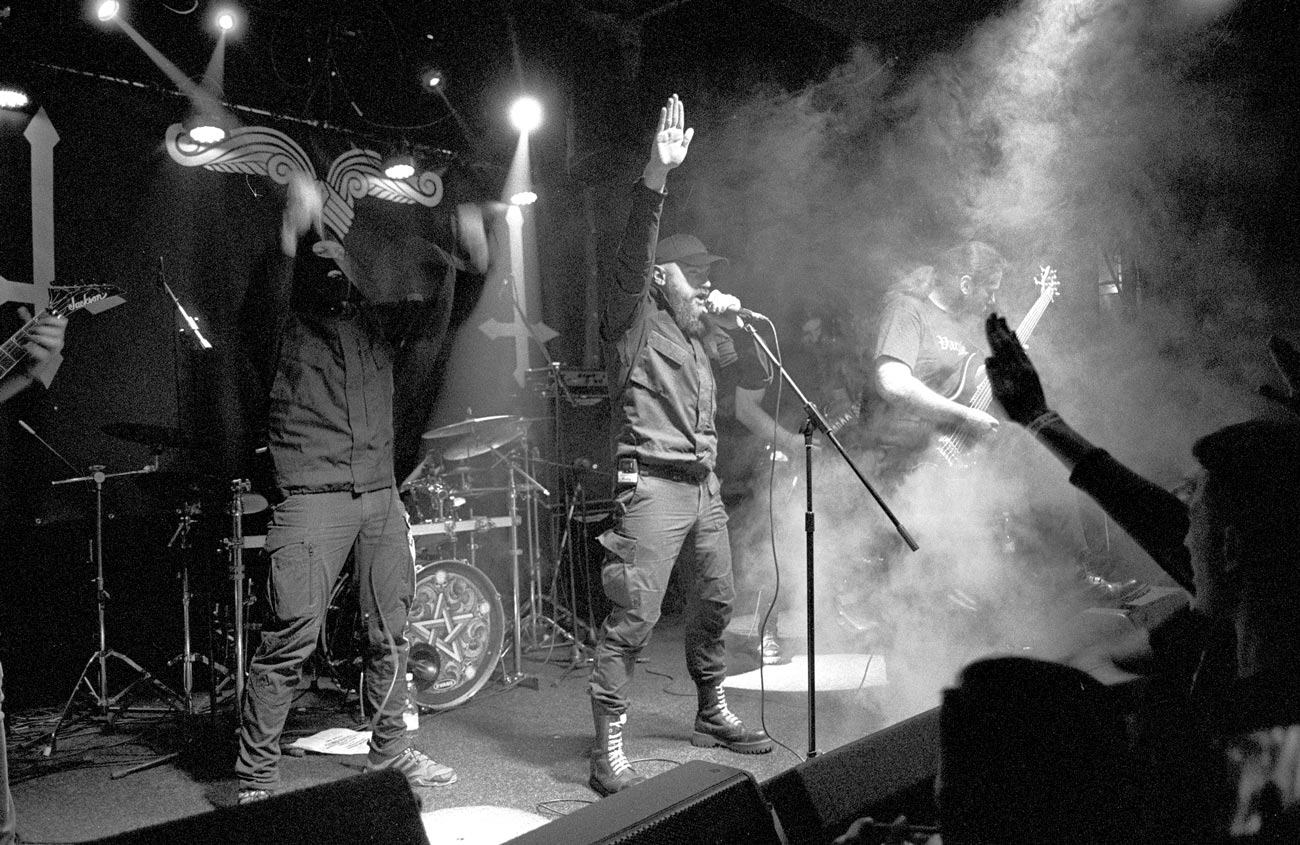

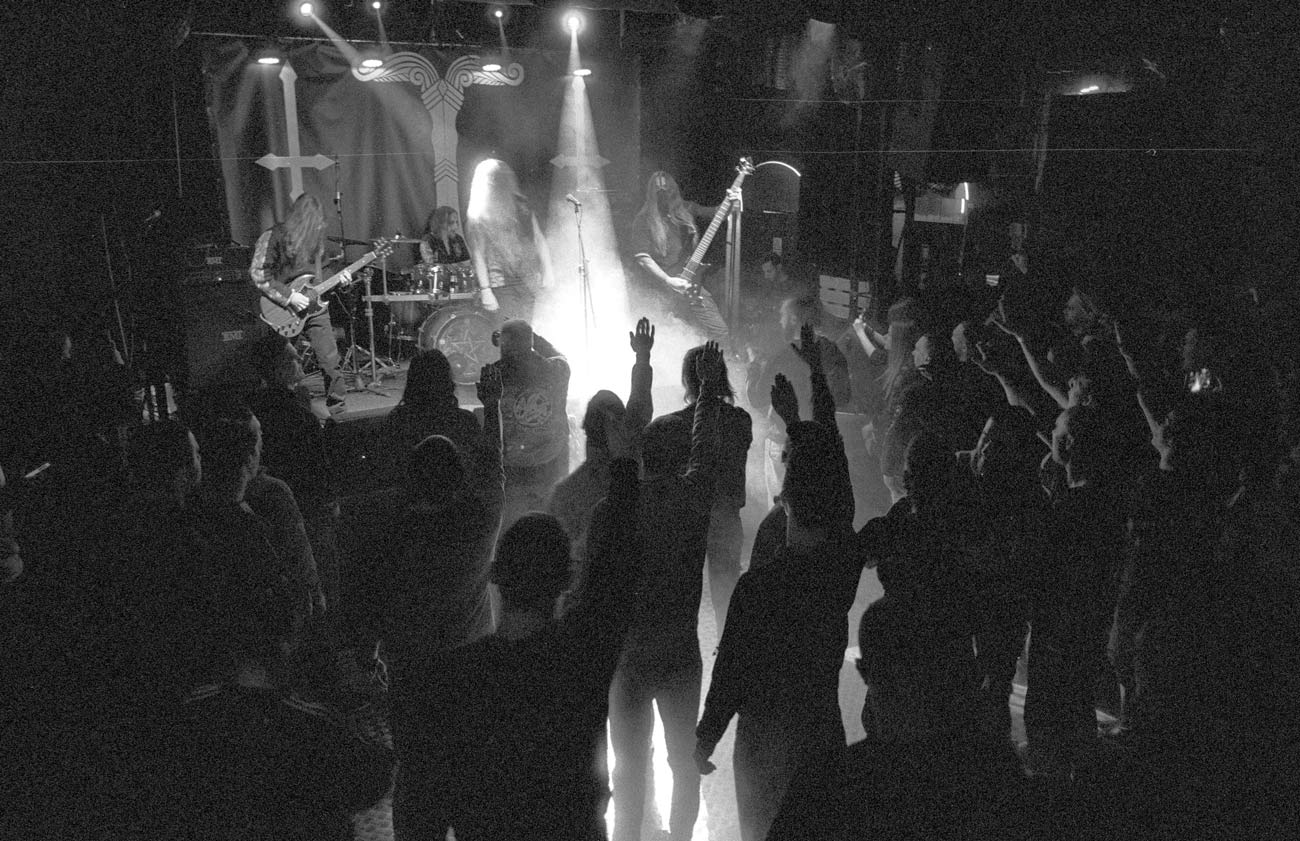
The Russian information and analytical center “Sova”, which studies neo-Nazis and extremists, writes that in 2006 Levkin was arrested in Russia for a double murder, but the charges were later dropped. According to the center, Levkin was also a member of a neo-Nazi gang accused of vandalizing Jewish and Muslim graves, several attacks and at least four murders.
Levkin himself does not like to be called a neo-Nazi and emphasizes that such a definition in relation to him is incorrect. “My views on the NSDAP program have nothing to do with it,” Levkin says. Globally, he talks about the world conservative revolution, which he characterizes as “the idea of abandoning modern social relations and returning to a certain primordial, not primitive, but rather primordial state.”
The European Union is disintegrating, and the countries of Eastern Europe – Ukraine, Poland, the Baltic countries – will create their own association or “Intermarium”.
“I would like the world to return spiritually to an archaic era,” he says. “It would be the era of tribes, some corporations that would shape history in a new way.” The idea of “Intermarium” is actively promoted by the coordinator of international relations of the “National Corps” close to Levkin, Elena Semenyaka. She also supported the idea of the Reconquista – a nationalist revolution that should begin in Ukraine, subsequently spread to Russia, and then to the whole of Europe.
Literal Terrorism
Levkin claims that he currently does not administer the WotanJugend public and only runs the Thule Signal channel, where he publishes mainly his thoughts on current events or history. There you can find historical notes, memes on far-right topics, announcements of events. The name of the channel translates as “Thule Society” – an occult group that influenced Hitler at the beginning of his rise to power. Thule Signal and WotanJugend obviously work closely together: channels often repost each other, and some publications appear there at the same time. WotanJugend has almost 15 thousand subscribers, Thule Signal has just over three thousand. The content is also distributed on other far-right channels, one of which has the word “terrorism” in its name – Literally Terrorism.
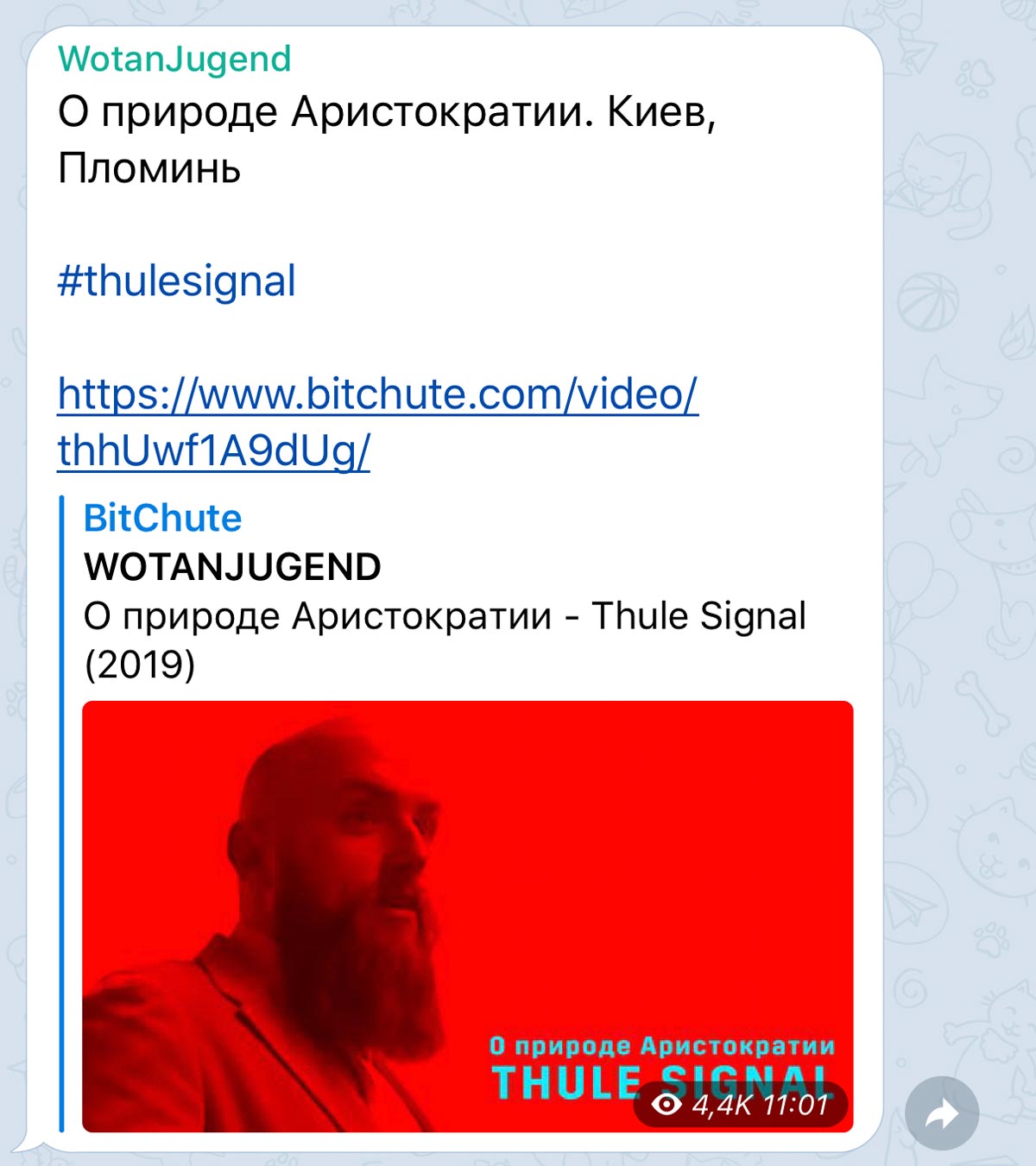
Levkin is not on other social networks: Facebook, for example, deleted his page after a series of Bellingcat publications about neo-Nazis in Ukraine. Levkin says that Telegram is the most loyal social network. Channels may be banned for terrorist propaganda or prohibited images and videos, such as ISIS executions or murders. Most of the radical right-wing publics do not have such content, which means they are safe. Levkin says he has not heard of any cases of blocking ultra-right channels.
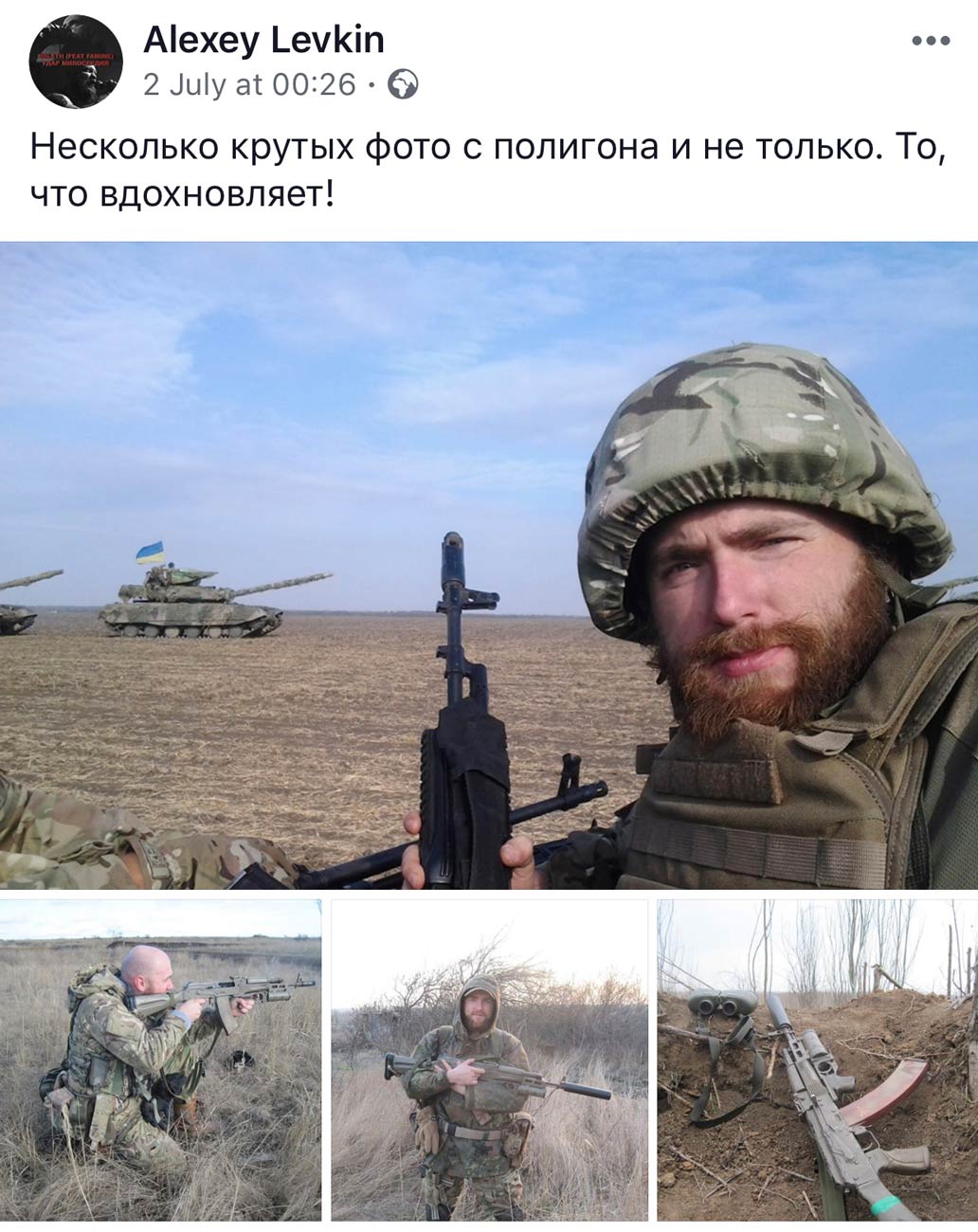
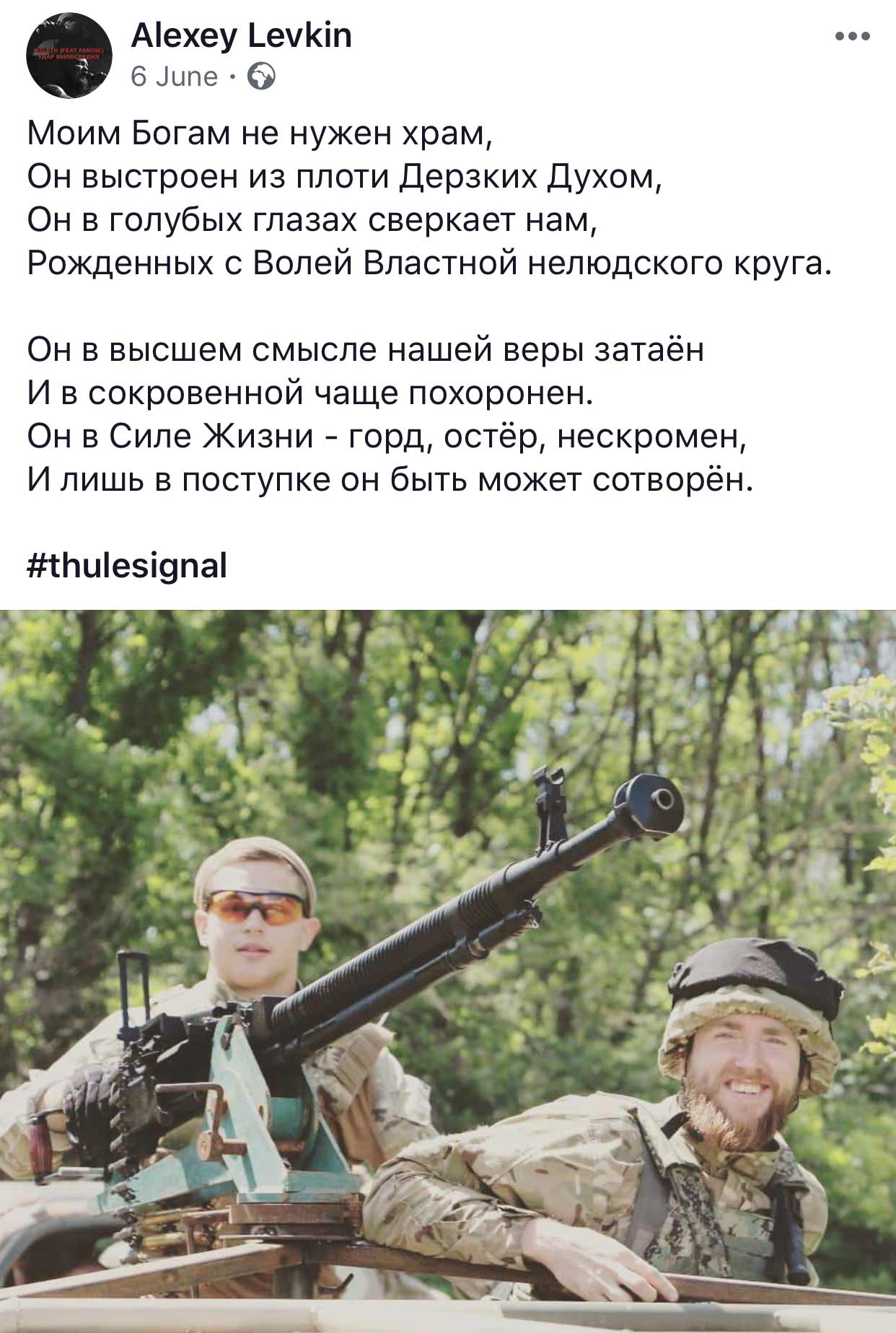
Neo-Nazi and far-right publics often glorify the Hitlerite Reich and its army, research far-right philosophy and political theory, and ridicule people with different skin color, leftists and liberals.
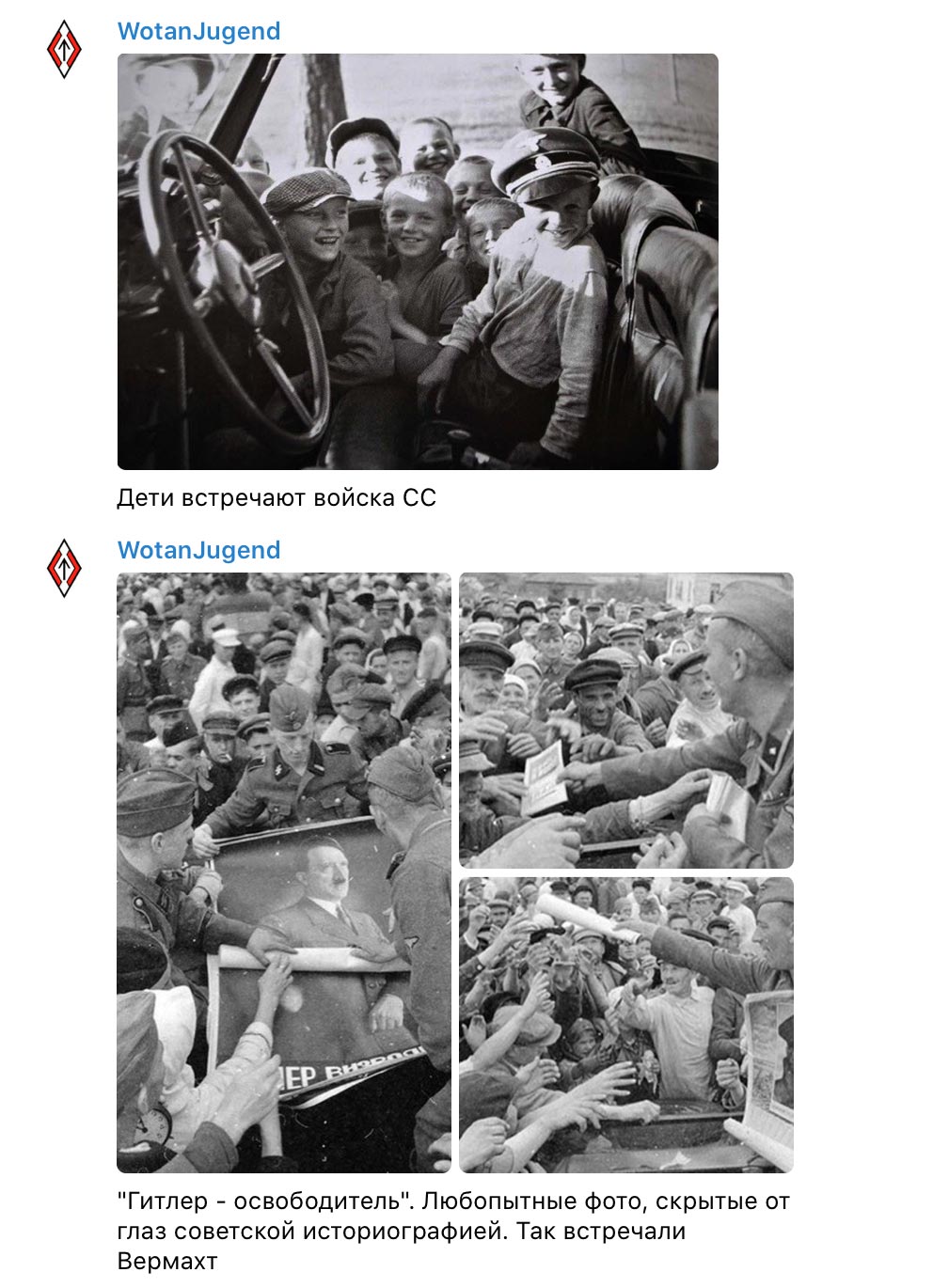
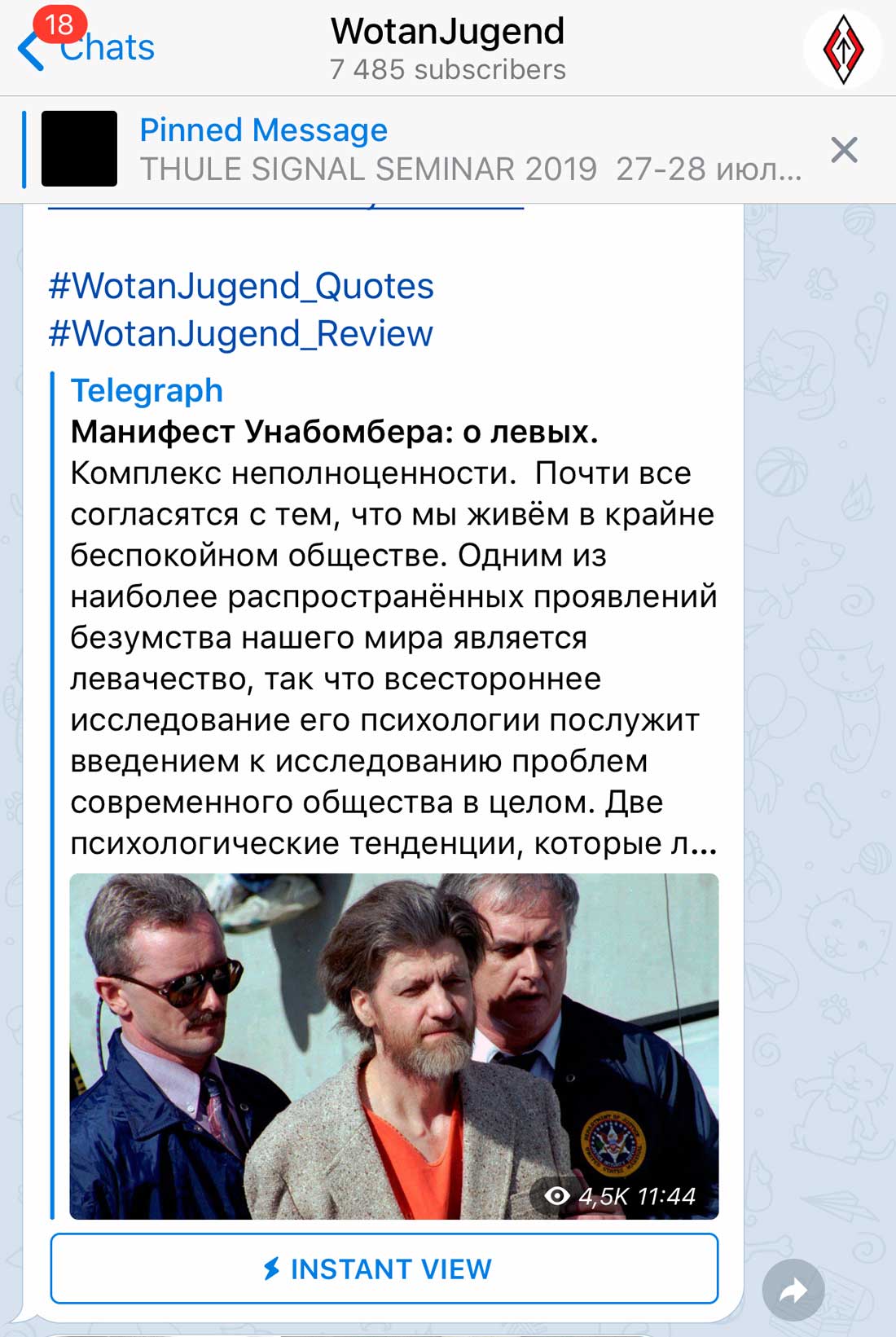
They also celebrate perpetrators of racially motivated terrorist attacks, such as the Christchurch shooter or Timothy McVeigh, who killed 168 people with a bomb in Oklahoma City in 1995. A poem published by WotanJugend in 2019 proclaims: “Fire on black biomass, fire on yellow protoplasm … Fire for Timothy McVeigh.”
In addition, these channels advertise offline lectures and master classes, as well as knife fighting trainings, which are also conducting by Levin.
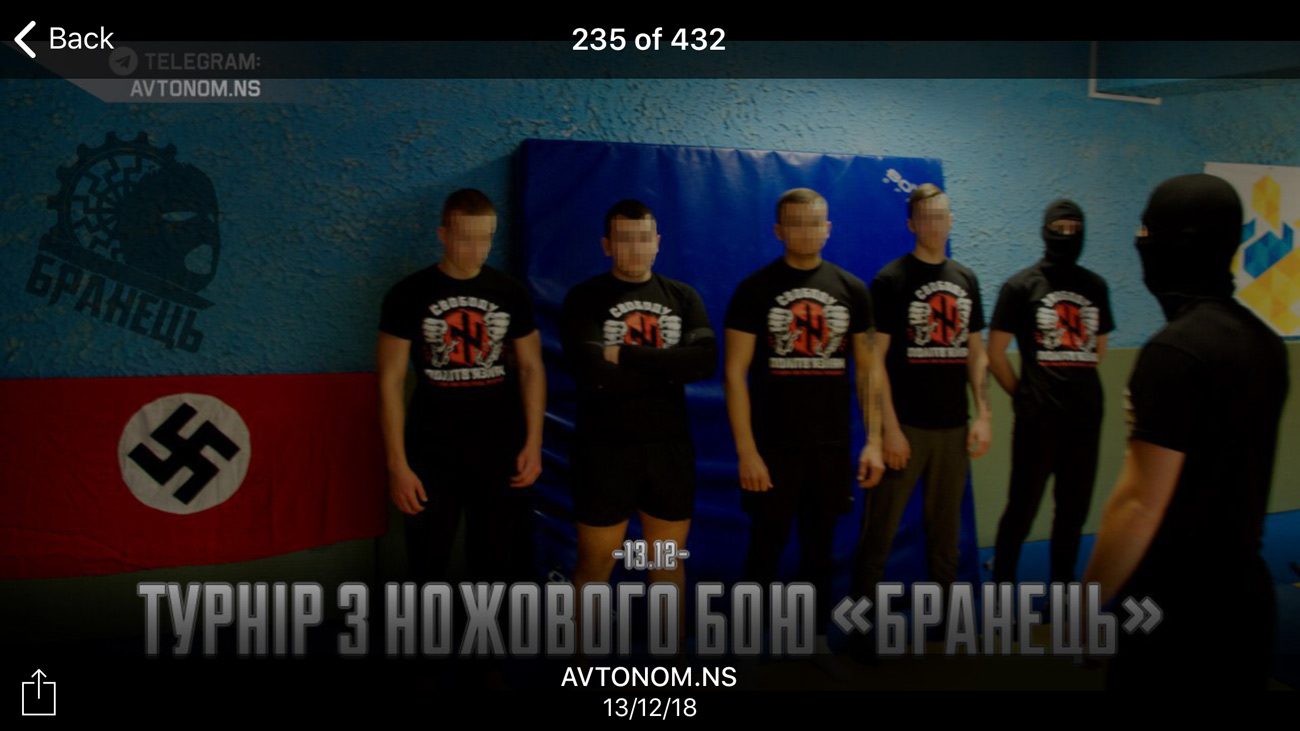
Regular heading – lists of friendly telegram channels: some in Russian and Ukrainian, others in English, German and other European languages. But Levkin considers the English-language channels to be of poor quality, because they do not generate original content: “English-language channels are more dumb and marginal, with open extremism.” In his opinion, Russian-language and Ukrainian-language channels are much more interesting and better coordinated, although there is no united “right front”, as he claims: “There are chats in which people communicate in order to promote a vaguely common agenda.”
The Аnswer to the “New Ethics”
In the wider ecosystem of far-right and neo-Nazi telegram channels, few are as loyal to old-school Hitlerism as WotanJugend. Even the most prominent of modern East European neo-Nazis, Sergei “Boatswain” Korotkikh (or the collective working under his brand), moved away from direct Hitlerism. Korotkikh, a native of Belarus, moved to Ukraine in 2014, where he became the chief of intelligence of the Azov battalion and received Ukrainian citizenship from the hands of former President Petro Poroshenko. From 2015 to 2018, Korotkikh, according to his declaration, was the head of the police department for the protection of “objects of strategic importance.” However, when asked by Zaborona about this, Interior Minister Arsen Avakov said that Boatswain had never worked in the Ministry of Internal Affairs. Some activists and journalists suspect that Boatswain may be involved in the murder of journalist Pavel Sheremet – Zaborona has already written about this in detail. His 23,000-subscriber Telegram channel is openly hating and obscene.
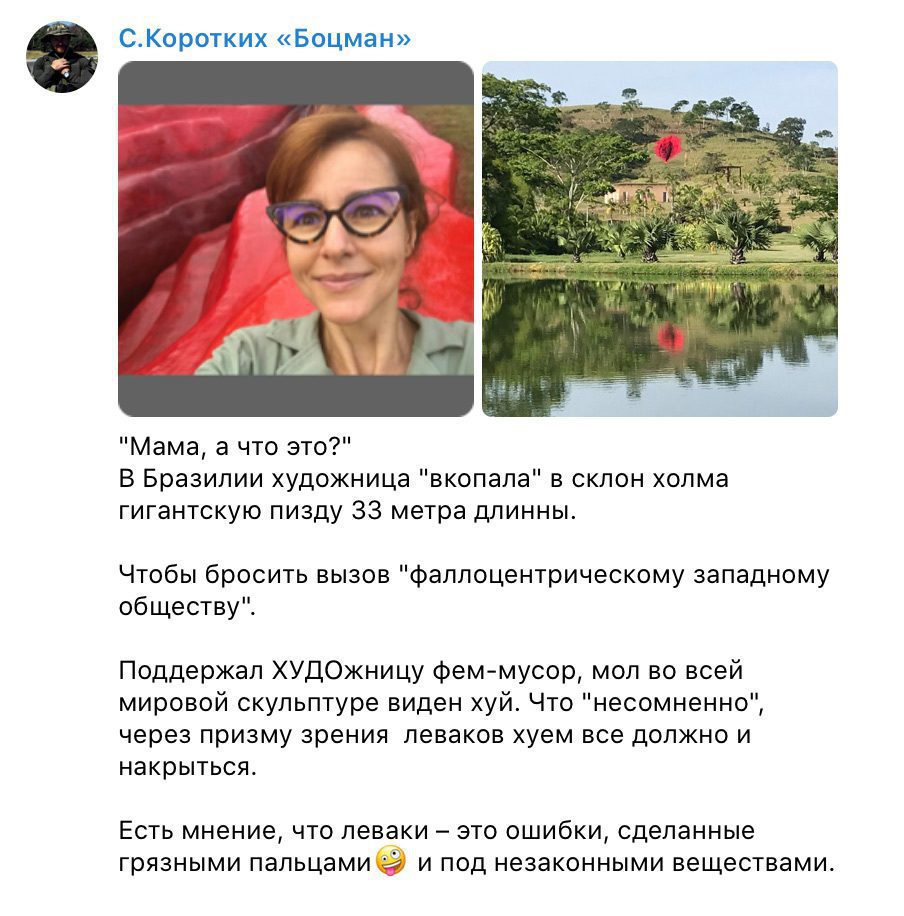
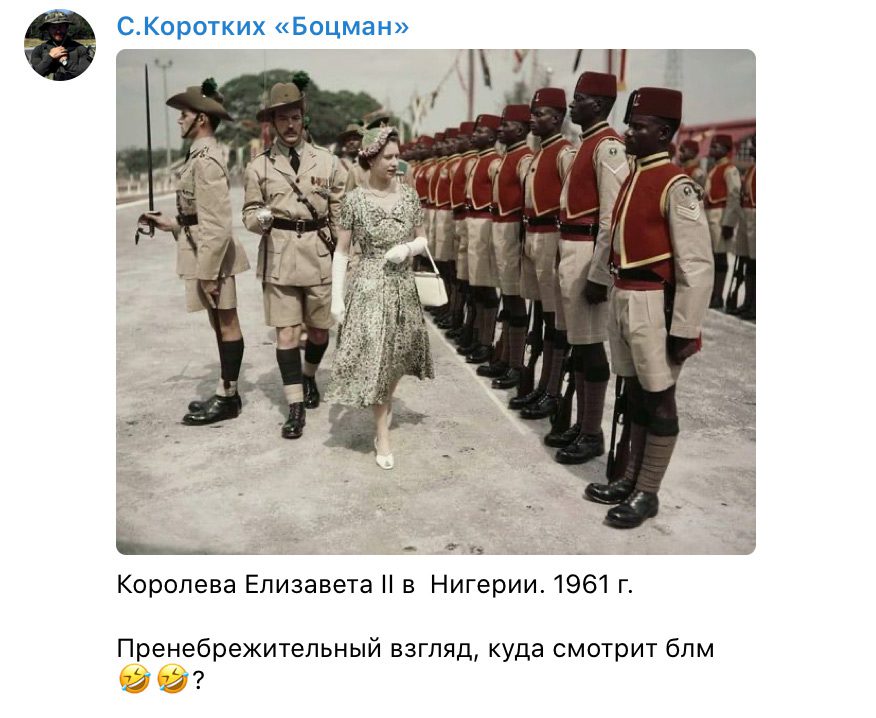
After one of the most famous Russian neo-Nazis, Maxim “Tesak” Martsinkevich, was found dead in a Russian prison, Korotkikh called him an important figure for the entire right-wing scene in his stream. This is not surprising: they were associates. Together with Tesak, Korotkikh developed the neo-Nazi organization National Socialist Society, whose members were accused of murder. At the same time, Korotkikh remains a completely legal figure in the Ukrainian media space. He appears regularly on political talk shows on Ukrainian television as a representative of the National Corps. You can read more about Korotkikh in this article “Zaborona”.
Most of the channels promote what they call “traditionalist and conservative views.” This goes well with open racism and hate speech towards gays and feminists. Levkin says many far-right channels are successfully reaching out to what the far-right calls “normus” —that is, ordinary people. They may not support far-right ideas, but their views have become radicalized following the Black Lives Matter protests and the dominance of political correctness.
Their main audience is young people. Levkin says that he has not studied the portrait of his reader, because he does not plan to make money from advertising in the channel, but according to his observations, people of 20-30 years old read him. Levkin mainly earns by selling clothes and paraphernalia from his store, as well as concerts. The channel helps him with this.
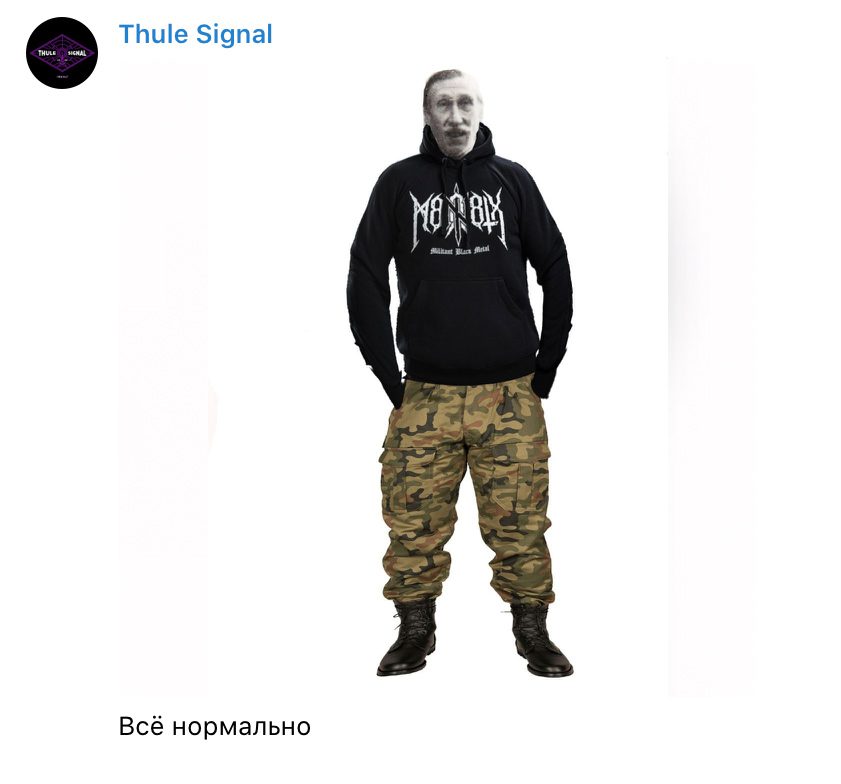
Mercenary propaganda
The extreme right, who fought on the other side of the conflict in eastern Ukraine, also create their ecosystems on Telegram, although they mostly live on Instagram. Channels associated with the Rusich detachment of open neo-Nazis Alexei “Fritz” Milchakov and Jan “Great Slavyan” Petrovsky avoid pure extreme right-wing topics, focusing on promoting professional mercenarism and the associated lifestyle.
Milchakov from St. Petersburg and Petrovsky, who grew up in Norway, come from the same milieu as the Russian far-right who moved to Ukraine. Milchakov was a close friend of Roman Zheleznov, who fought in Azov and worked in the National Corps until 2016. The choice of the side of the front in the Russian-Ukrainian war was not obvious to him. During the revolution, he traveled to the Maidan, and even becoming a fighter of one of the most brutal units of the self-proclaimed “Luhansk People’s Republic”, he continued to communicate with comrades on the other side of the front. In 2015, Milchakov took part in a discussion about the war in Donbass on the air of the Azov online radio. At the same time, good relations with the Azovites did not prevent Milchakov from making bloodthirsty statements about the Ukrainian military and even posing with the cut off ear of the killed Aydar soldier.
Both Milchakov and Petrovsky joined the most famous Russian private military company Wagner, so they fought not only in Ukraine, but also in Syria and Libya. They regularly posted photos and videos from dangerous business trips. The most popular of the squad’s telegram channels (more than five thousand subscribers) specializes in comics from the life of mercenaries. These channels do not have a clear ideological orientation, even pro-Putin, so they simply propagandize the war.
Ukrainian right-wing radical publics are mainly associated with the Azov regiment and the National Corps party. These are the channels of the regional branches of the National Corps and its subsidiary projects such as Centuria. The audience of these channels is not large: from three to five thousand subscribers. Levkin, who previously worked closely with Azov, believes that too little money is invested in their promotion. He claims that now he is not conducting any joint projects with Azov and the National Corps: “I support them – there used to be seminars, events, but nothing has happened since the quarantine.”
A report published by the West Point Counterterrorism Center (by CNN journalist Tim Lister) says the existence of “paramilitary groups” in Azov has forced ultranationalists from around the world to view Ukraine “as the country of their dreams.” Levkin himself calls Ukraine “the promised land.” A report from the Royal New Zealand Commission of Inquiry into the Christchurch shooting says that shortly before the attack, Brenton Tarrant had told his family that he was planning to move to Ukraine.
However, right-wing radicals are poorly represented in the country’s political life. Even the “Right Sector”, which gained great popularity after the Euromaidan, was represented in parliament only by its leader Dmytro Yarosh according to the results of the 2014 elections. The commander of “Azov” Andriy Biletsky was also a deputy, but there was no single strong party in the Verkhovna Rada and there is none as of now. But the former Azov people found themselves in the Ministry of Internal Affairs: apart from the already mentioned Boatswain, the former deputy commander of the Azov regiment Vadim Troyan remains the right hand of Minister Arsen Avakov.
Both the National Corps and the conservative group Tradition and Order have announced their political ambitions. But so far, social media and street actions remain their main platform for promoting the views and recruiting supporters.
“Aviary”
On November 19, 2020, 19-year-old Lviv anti-fascist and environmental activist Anton Gribnitsky was returning home. Several young men with bats were waiting for him near the entrance, later nine more people joined them. They began to beat Anton, periodically shouting: “Stop, mongrel [as they call anti-fascists in slang].” Anton managed to escape and hide in a cafe, from where he called an ambulance. In addition to bruises and abrasions, the guy received a concussion and a broken finger.
Back in March, information about Anton appeared on the «Aviary» Тelegram channel. The channel’s description says that it is “a base of anti-fascists, anarchists and other left bastards, created to improve their identification.” Anyone can get into the “Aviary” if the authors consider him an adherent of leftist ideas or a member of the LGBT + community. For example, a photo of human rights activist Maksym Butkevych was posted in “Aviary”.
The author and creator of the channel is 26-year-old Alexey Svynarenko. In 2014, he was an active participant in the Euromaidan, wounded during the February executions. As soon as the anti-terrorist operation began in the east of the country, Svynarenko volunteered for the Saint Mary battalion. In 2015, he ran for the city council of Zhitomir from the “Radical Party of Oleg Lyashko”, but failed.
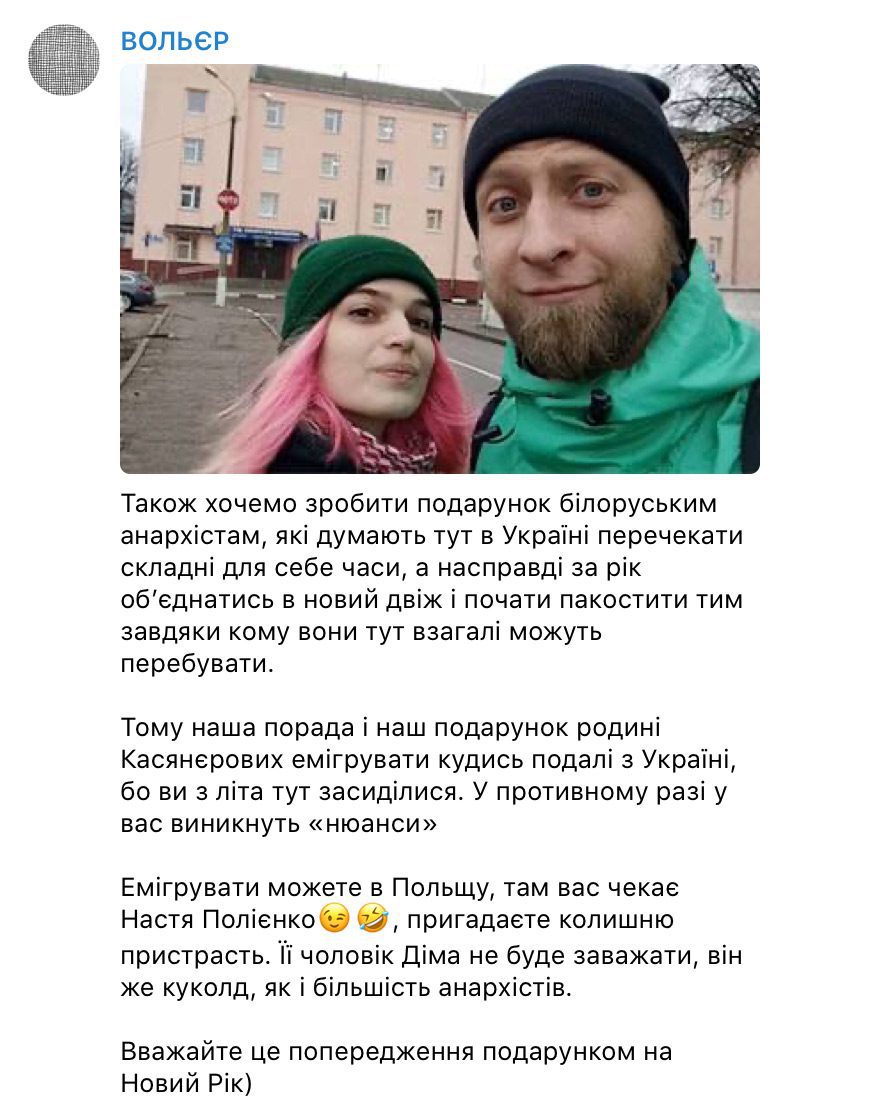
Now Svynarenko leads the radical organization National Resistance. It is little known, yet is already actively manifesting itself in street actions – for example, its participants opposed the mayor of Lviv in 2018. This year, National Resistance went to the UPA memory march, which ultra-right and nationalists hold every year on October 14, with the banner “White Lives Are Important”. This is a racist nod to the Black Lives Matter slogan, which has become the main symbol of protests against the murder of George Floyd, black guy murdered by police.
In his Zaborona commentary, Svynarenko calls “Aviary” a “human rights center”. “Since 2015, left-wing radicals have carried out dozens of hate-motivated attacks. A significant part of the victims are volunteers, veterans of the ATO (for example, Dmytro Verbych),” – that’s how Svynarenko explains the purpose of creating the channel. Dmytro Verbych was indeed attacked in May 2018 – according to one of the versions, it was done by the members of the left-wing radical groups that “hunt Nazis in Kyiv.”
Channels often appear on the Telegram, where they publish data of LGBT + activists or people of left and anti-fascist views. In the summer of 2019, one of these channels published photos of people who attended the Equality March – the main event of the Ukrainian LGBT + community. But this channel was quickly blocked due to user complaints: most often the same happens with other similar publics. “Aviary”, according to Svynarenko, is not blocked, because it does not violate the rules of the social network: all information published there is taken from open sources. However, in the chat, which is tied to the channel, they also publish the addresses of the alleged “targets”.
“There was not a single case of an attack due to the publication of information on our channel,” Svynarenko says. Anton Gribnitsky is sure that the radicals have been following him for a long time and the publication of his data on the channel did not play a significant role. His friend Violetta, whose pages on social networks were published in “Aviary”, told Zaborona that after the publication she received threats in private messages. And on December 5, LGBT + activist Kirill Samozdr was beaten in Kyiv. Earlier, he hung a rainbow flag on the balcony of his dorm room, after which his personal data were published on Telegram channels.
“This is the Internet”
The propaganda of any neo-Nazi ideas is prohibited in Ukraine. However, there is no systematic struggle against the neo-Nazi and ultra-right publics. Neither the Telegram, which did not respond to our request, nor the Ukrainian police are engaged in this. Interior Ministry spokesman Artem Shevchenko said in a comment to Zaborona that he didn’t read publics on Telegrams and didn’t know anything about ultra-right channels. According to him, in order for the police to pay attention to this matter, you need to submit a statement and then the police will start the investigation. At the same time, Shevchenko adds that it will still not be possible to close all the channels, “because this is the Internet.” At the same time, the police is working with the Telegram channels where drugs are sold and regularly reports on their successes. The Ministry of Internal Affairs even created a special bot that blocks such channels.
For radicals, Telegram remains the most free platform where they can promote their ideas, recruit new supporters and coordinate attacks on opponents. The authors and administrators of such publics build their policy so as not to catch the eye of the police. One young couple, whom Zaborona spoke to, claimed that they have their own Ukrainian-language channel on Telegram [the channel they mentioned exists, it has 4,000 subscribers]. They said they are very careful and follow simple rules to stay safe: “Don’t call for the overthrow of the regime – instead, talk about our vision of the future. You can still talk about Tarrant, but in a biographical form.” The key to success, they say, is to go beyond the extreme right-wing bubble by mixing political propaganda with entertainment content. In this way, they argue, they managed to attract mainstream followers and “even some leftists.”
Translated by Aaron M. Kennet from Respond Crisis Translation
.




